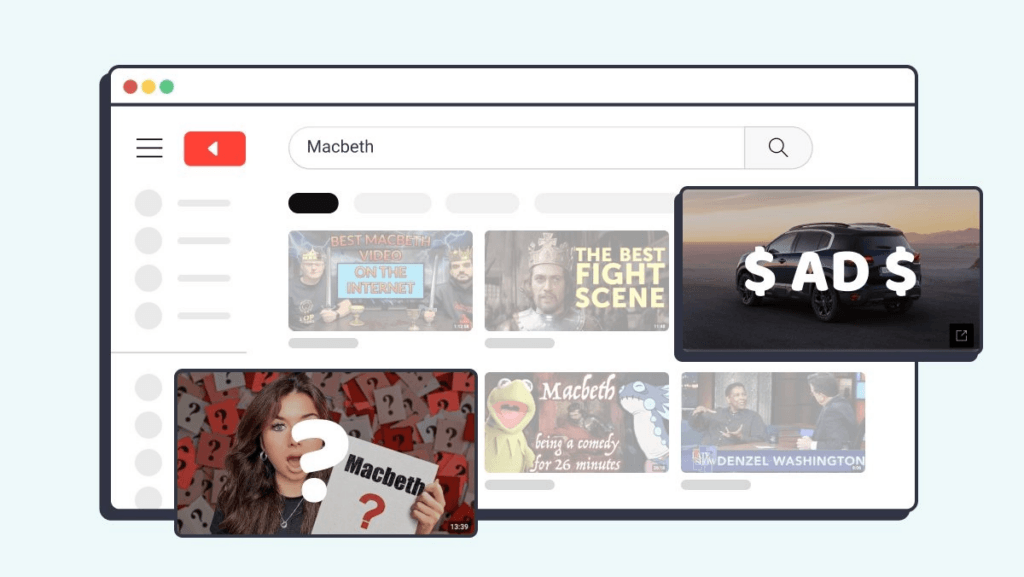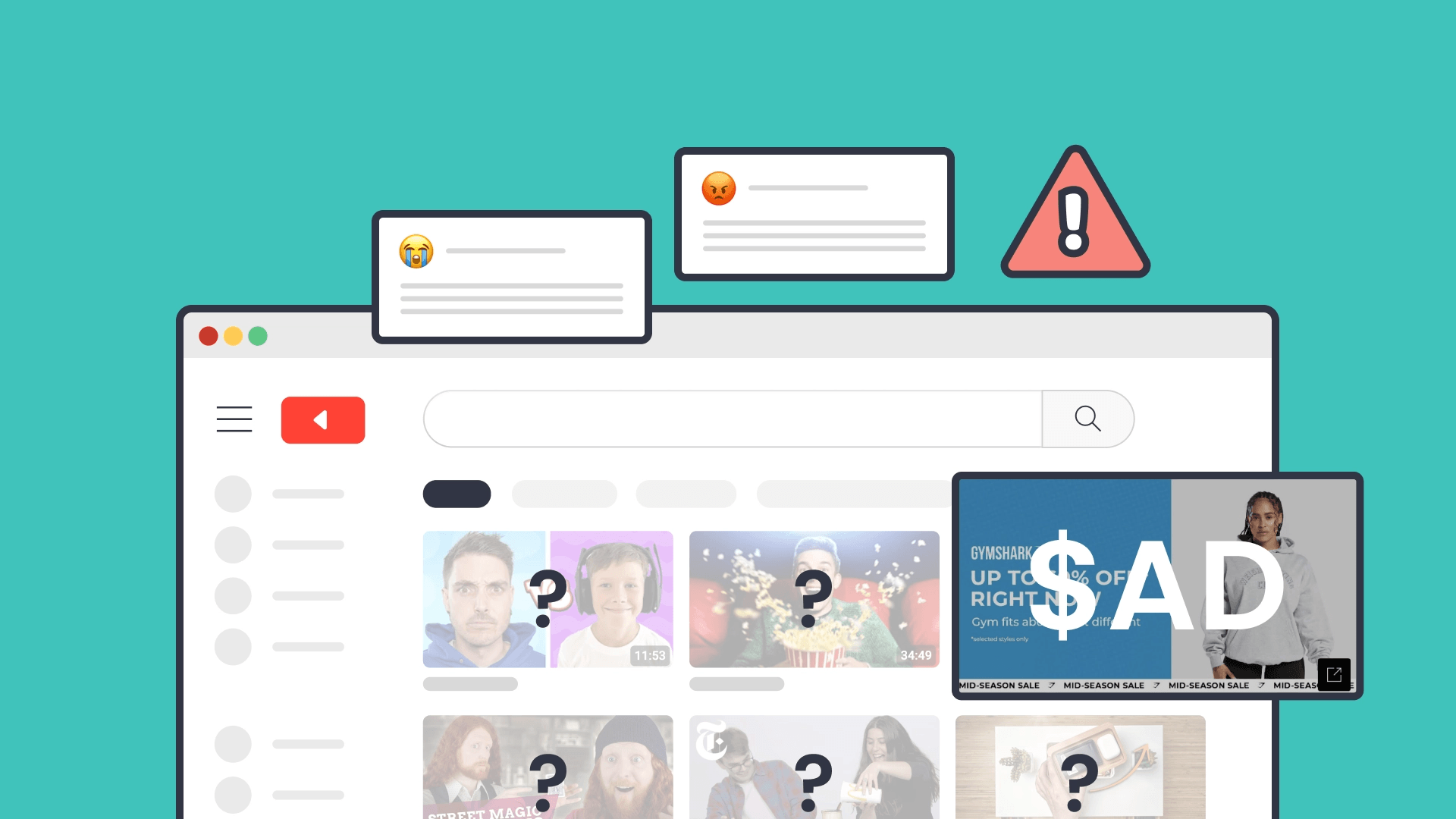YouTube is problematic for 73% of teachers: What your school can do
In this guide
A busy Year 10 English teacher is planning a lesson on Macbeth. She knows that showing a video will help engage the class and bring the topic to life. In fact, 91% of teachers use video to help motivate their students.
Chances are, unless her school has a platform like ClickView, she’ll turn to YouTube to find a relevant clip. After all, she uses YouTube in her personal life – it’s the second-most visited website in the world, after Google.
But using YouTube in the classroom calls for a very different approach to using it at home.
The Macbeth Experiment
Do me a favour: open up YouTube and search ‘Macbeth’. If your results are anything like mine, you’ll get endless playlists and videos ranging from a BBC Teach collection to a ‘Hamish Macbeth’ murder mystery.
Where does our English teacher start? How can she quickly find the right clip to align with what she’s going to teach? Will the video be age-appropriate? Will there be distracting adverts interrupting it? All these questions and more crop up when teachers use YouTube to support learning. 73% of teachers have experienced inappropriate, embarrassing or unsafe YouTube content in their lessons*.
YouTube is a fact of life, and despite its many drawbacks for use in education, banning it entirely in schools isn’t – always – the answer.
The W.A.T.C.H. approach to safer, more effective YouTube use
As a school leader, there’s some simple guidance you can share with teaching staff. Before they click on YouTube, ask them to ‘think W.A.T.C.H’.
W = Workload
If you’re planning on using a YouTube video in your lesson, factor in enough time to prepare. Many teachers already spend excessive time on lesson planning. Finding, and potentially editing, the right video takes time. The content needs to be fully vetted (i.e. watched all the way through) to ensure it’s safe and relevant.
A = Adverts
Unless you have a paid YouTube subscription, you’ll most likely have ads appearing at the beginning and end of videos, as well as partway through in some cases. Consider changing your settings to avoid potentially embarrassing personalised ads or viewing suggestions. Of course, this isn’t a guarantee inappropriate ads won’t be shown. In a recent survey of over 6,700 teachers, 53% had experienced inappropriate, embarrassing, or unsafe content in YouTube ads when streaming video in class*.
T = Targeting
Naturally, content on YouTube isn’t curated or categorised according to age-appropriateness or curriculum relevance. Be careful when planning to show videos to students in Year 8 and below (unless using the YouTube Kids platform). YouTube’s terms of service state an age requirement of 13 years and over unless the child has the permission of a parent or legal guardian.
C = Content
18% of teachers have had unsafe content appear midway through a video that they had previously assumed would be suitable to show to their class*. Again, always vet the content before showing it. Another consideration is how culturally appropriate the content is for your school – are you continually using videos voiced in British accents, for instance, which won’t resonate as well with your Australian class? Also, remember to check when your video was produced to avoid inadvertently sharing out-of-date information.
H = Homework
Showing a vetted video in class is one thing, but what about self-directed learning? Think carefully about the topic under discussion before suggesting students research YouTube alone, in case you’re opening them up to harmful or distressing content.

Reducing reliance on YouTube to support teachers
We didn’t design ClickView to solve the issues associated with YouTube in the classroom. We created it to support teachers to engage and reach every student through video. We produce, license, and curate videos for teachers and students to easily access in a safe, intuitive platform.
But increasingly, we do see the benefits in reducing the anxieties and workload pressures teachers experience when using YouTube.
Back to the Macbeth experiment
Let’s try that experiment again. If I type ‘Macbeth’ into clickview.net, instead of a bewildering array of random content, I get around 50 results which I can filter by year level, resources, and movies and TV series. I have access to the Schooling Online collection – just like on YouTube – but I can also choose from a wide selection of other curriculum-aligned videos. This includes original ClickView productions as well as copyright-cleared and ad-free series, for example, Crash Course, Complexly, and Makematic.
If we run ClickView through the W.A.T.C.H. guidance, it’s a very different story to YouTube.
- Workload: The vetting has already been done by our team, so no need for teaching staff to spend precious time on it. What’s more, teachers can save relevant clips into a shared library for other staff to access, reducing time and resources across the whole school.
- Adverts: Every video is ad-free.
- Targeting: Videos are curriculum-aligned, age-appropriate, and cover every subject’s topic area.
- Content: Teaching staff don’t need to worry about accidentally showing their class unsafe, embarrassing, or culturally inappropriate content. Plus, ClickView is constantly updated and comes with classroom-ready resources. Teachers can enhance the videos with interactive quizzes and use the intuitive editing tool to clip the exact section they want to share.
- Homework: Teachers can share videos through the learning management system (LMS) so students can safely conduct their research. ClickView’s analytics allow teachers to see who’s watched what and how well they understood the subject.
There may always be a role for YouTube in schools. But one of the reasons the 6,000 schools we work with worldwide stick with us year after year is that we help them reduce their reliance on the platform. Which, in turn, means reducing workload, stress, and potential safeguarding issues while harnessing the power of video to inspire students and improve outcomes.
This is how Mike Hamilton, a Strategic ICT Manager at 60 schools puts it:
We knew when using YouTube, our teachers were experiencing inappropriate content and the quality of resources was often questionable as teachers have little time to thoroughly review content. However, we cannot just thrust extra workload on our teachers, so we took action adopting ClickView. This has led to a reduction of workload for our teachers, an improvement in resource quality, and crucially ensured a safe and compliant environment, protecting our staff and students.
*Teacher Tapp Survey of 7,000 teachers carried out in June 2023
Watch the video below to find out more about ClickView as a YouTube alternative for your school.
Interested in finding out more? It’s quick and easy to trial ClickView – Sign up for free.

Rachel Dunne
briefcase iconEdtech Advocate
Rachel Dunne is a passionate educator and edtech advocate with a deep belief in the power of technology to enhance student engagement, collaboration, and creativity. With over a decade of experience as a primary teacher and education consultant, she has seen firsthand how technology empowers teachers to better understand their students and personalize learning for every individual.
Other posts
Want more content like this?
Subscribe for blog updates, monthly video releases, trending topics, and exclusive content delivered straight to your inbox.






